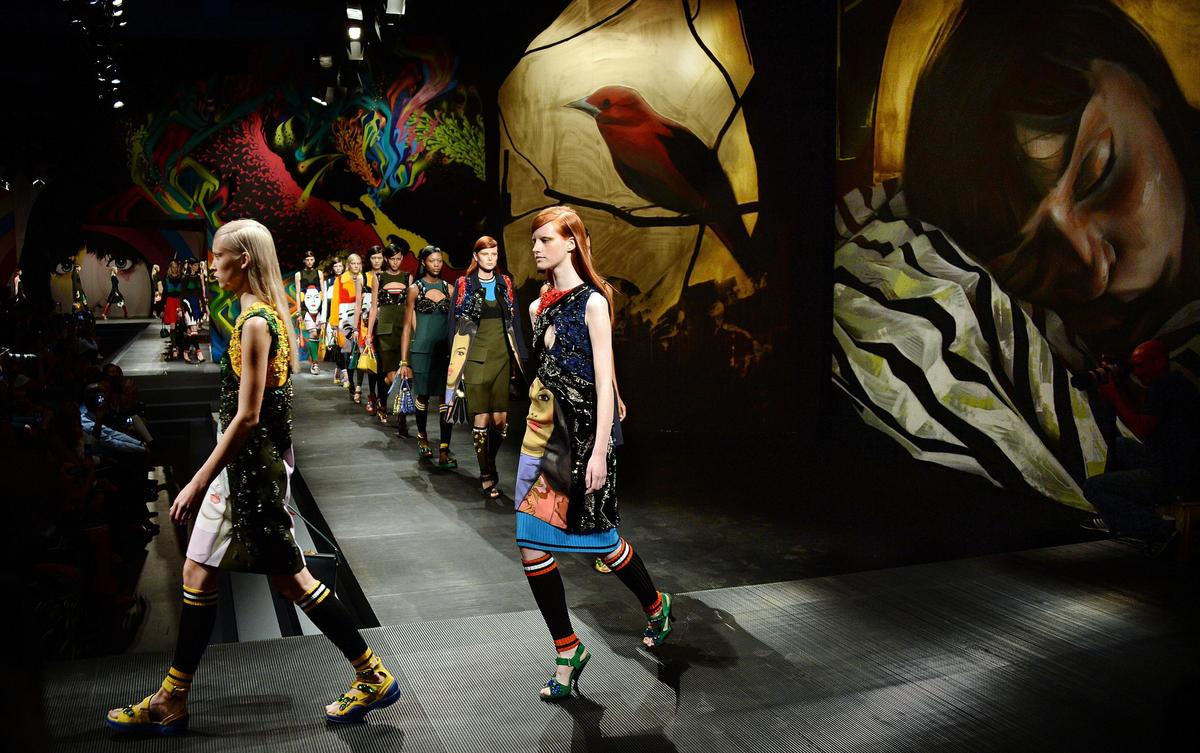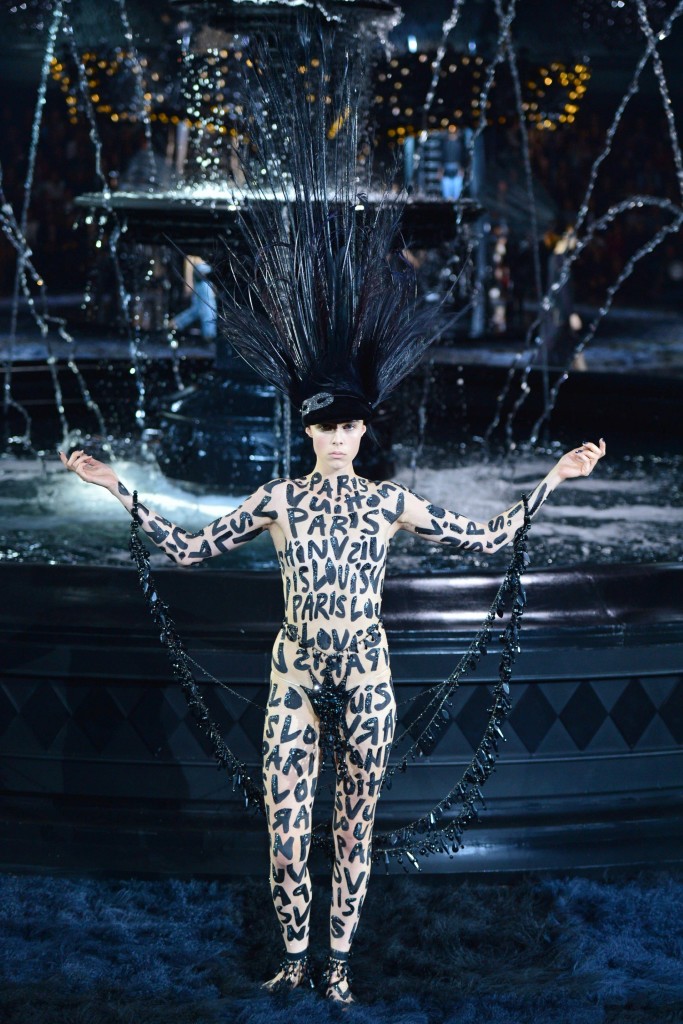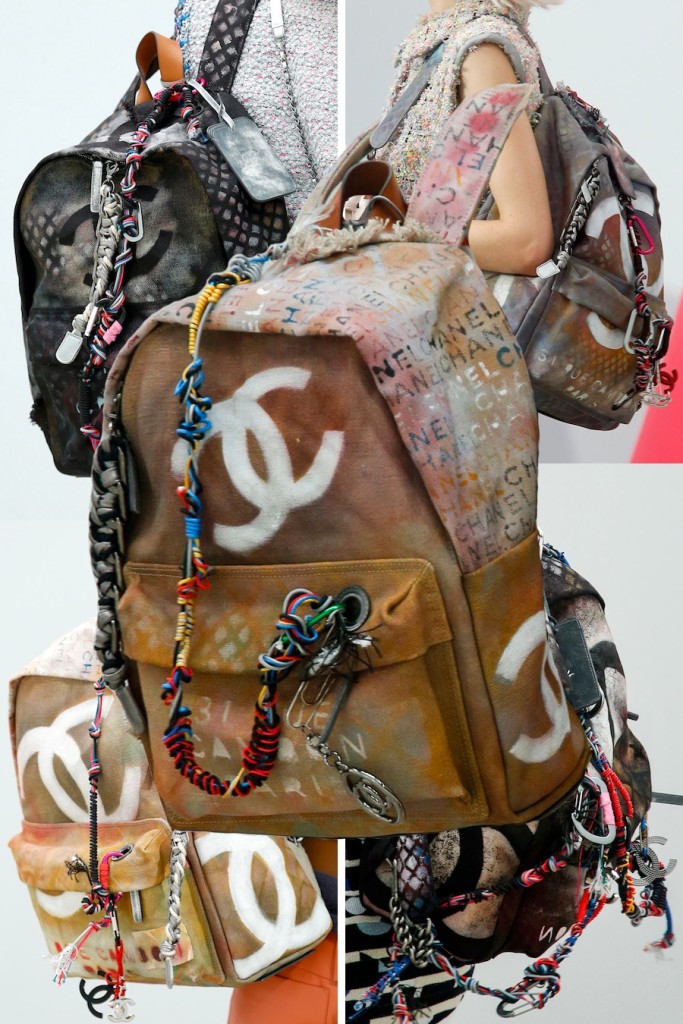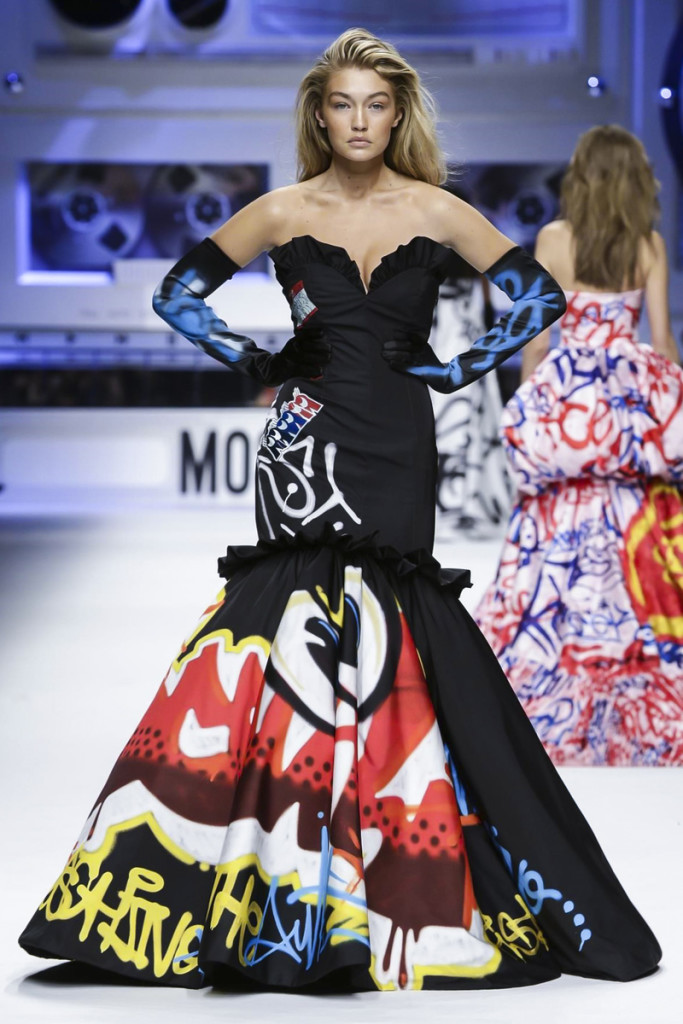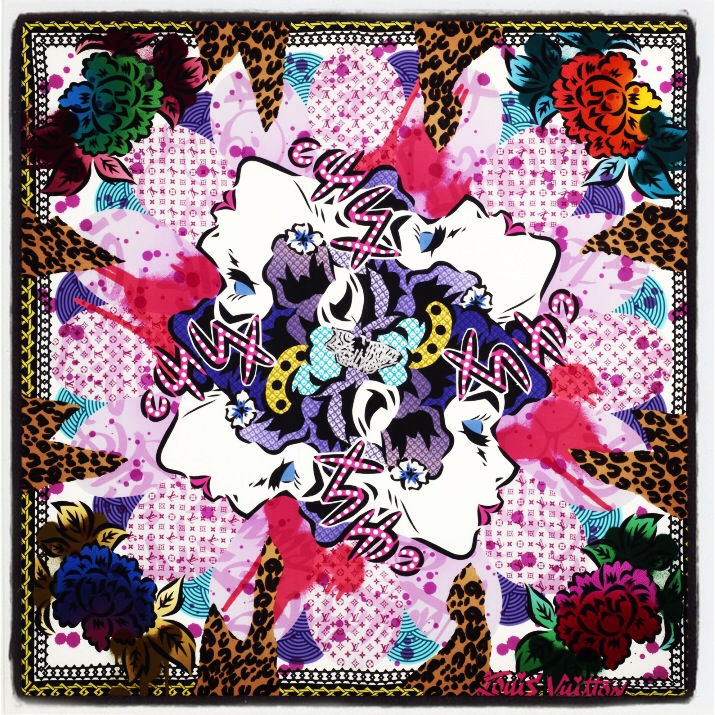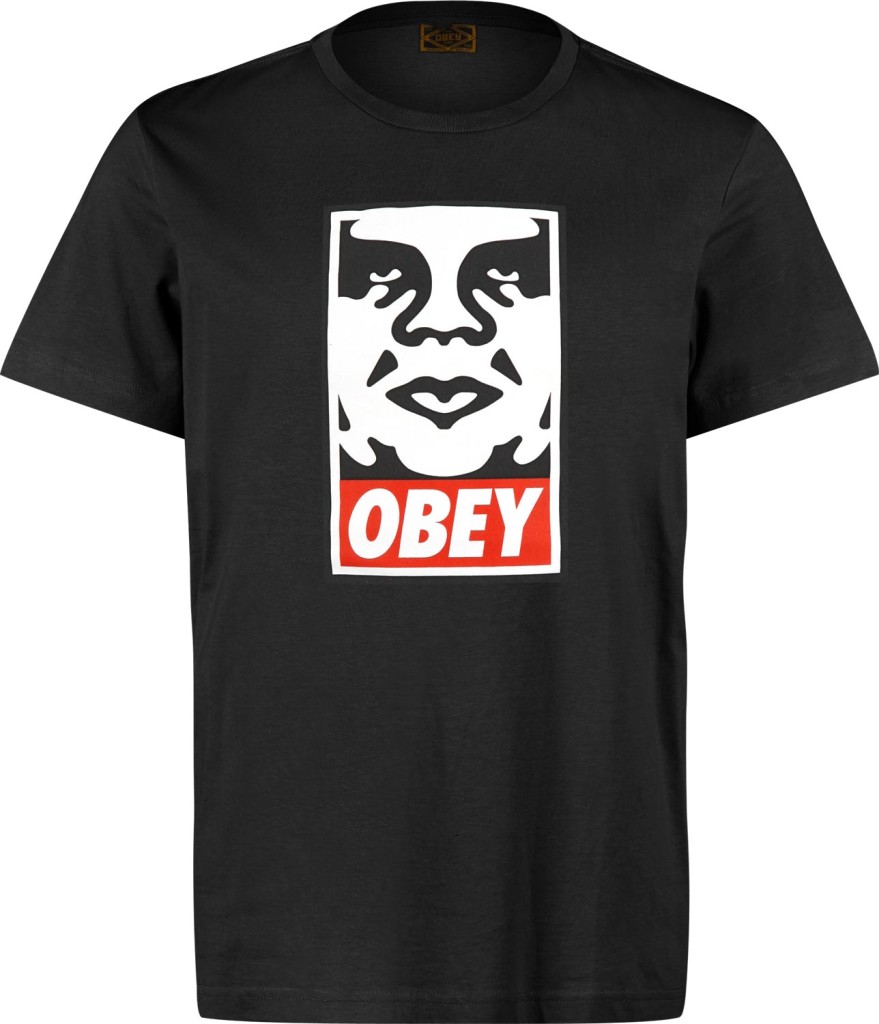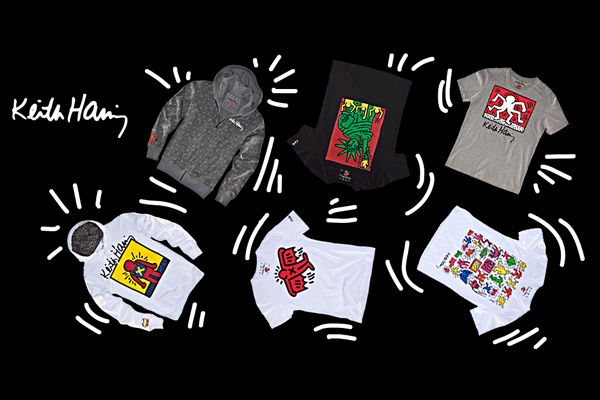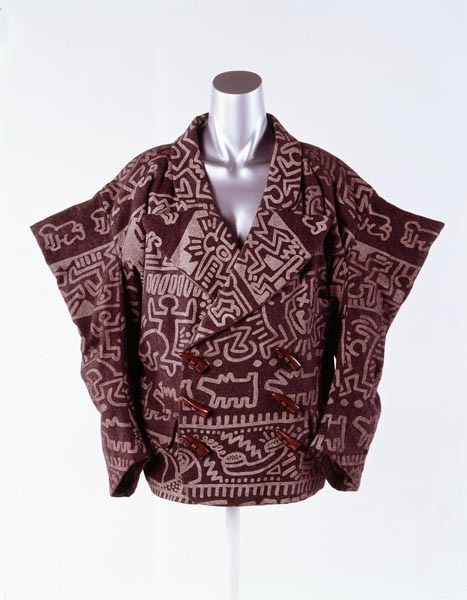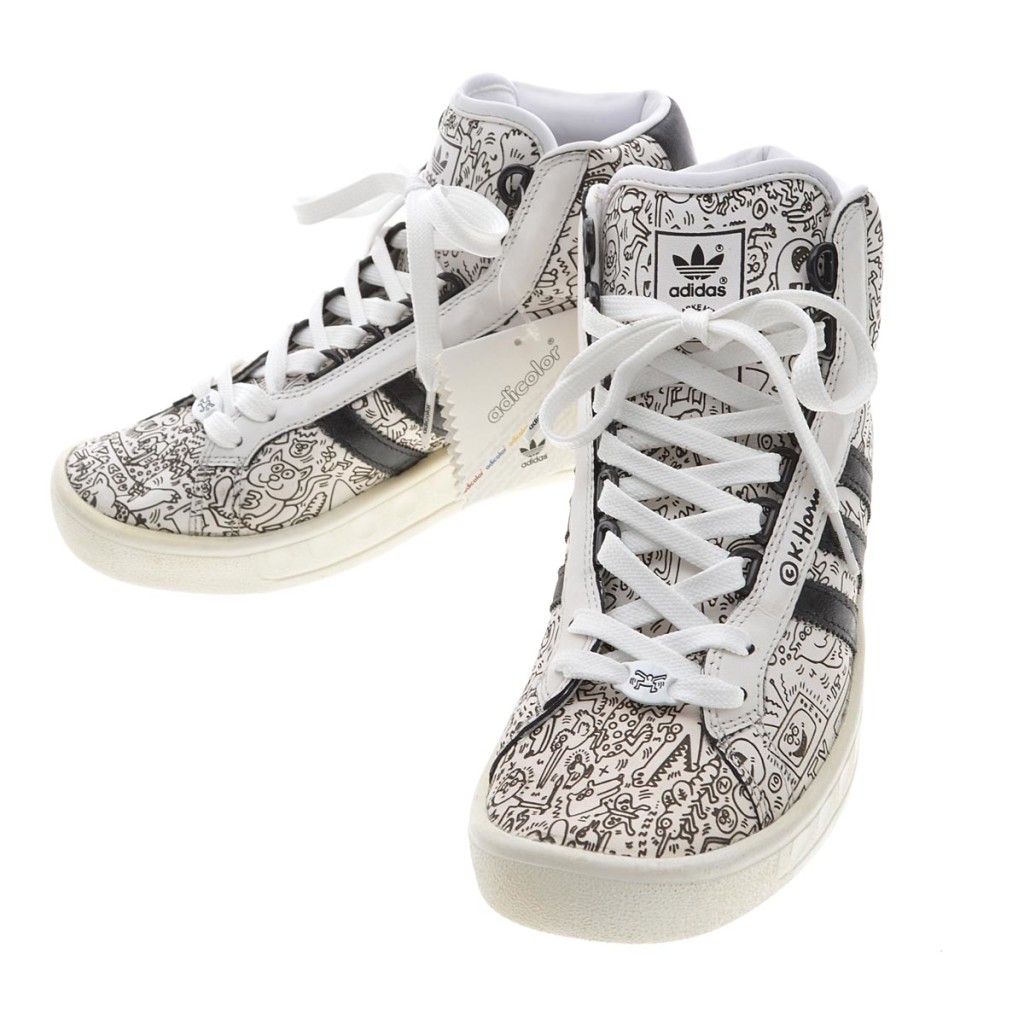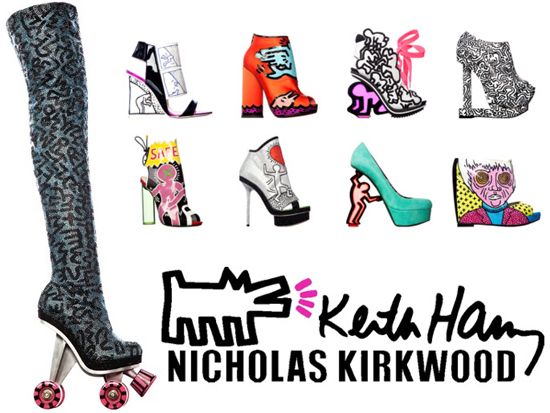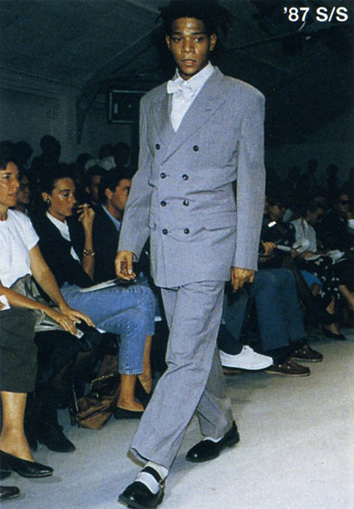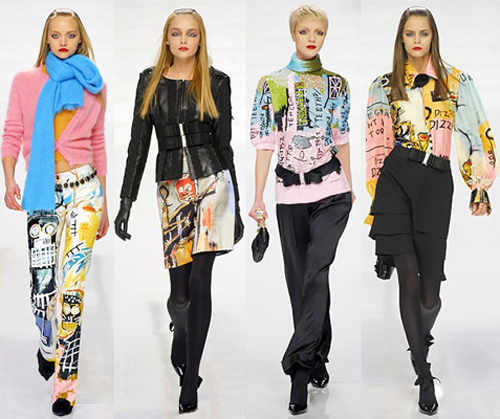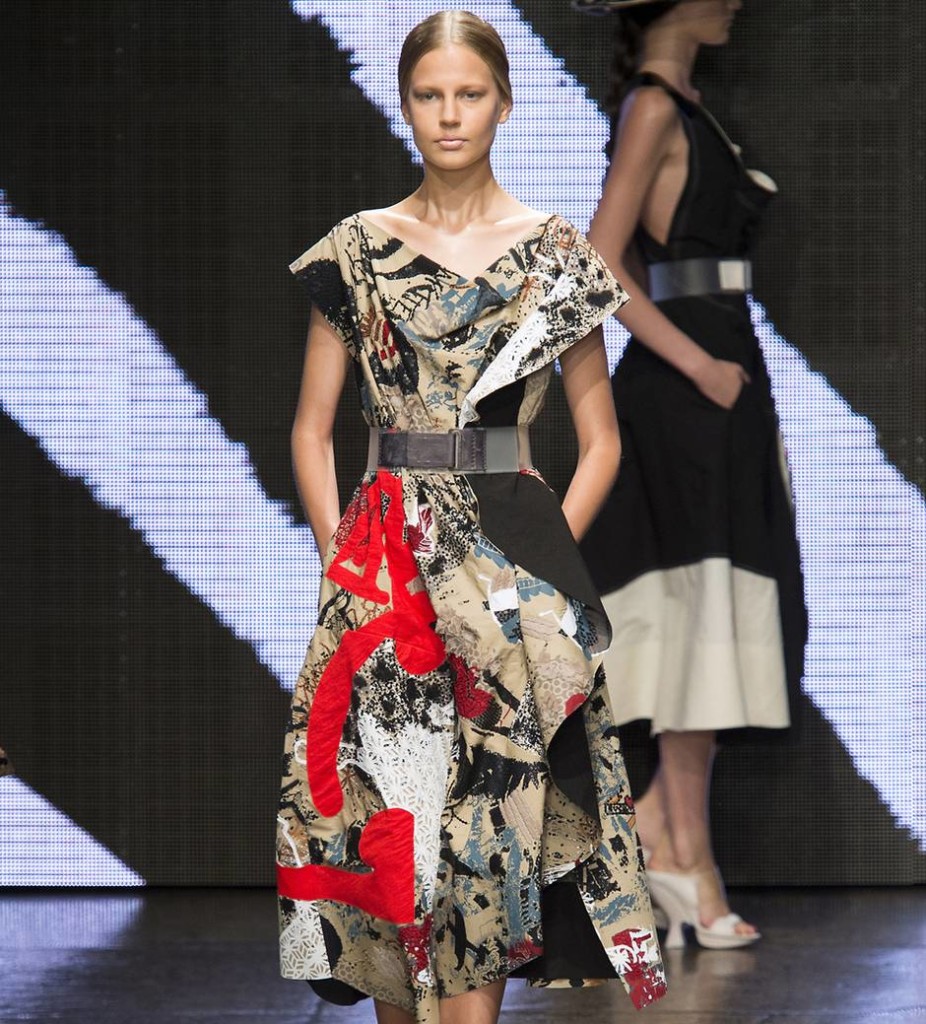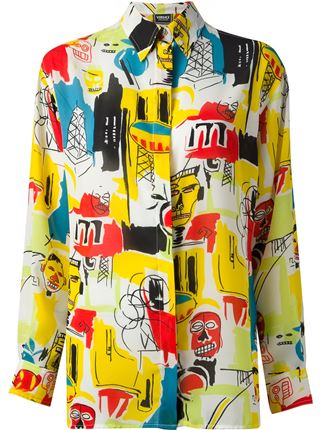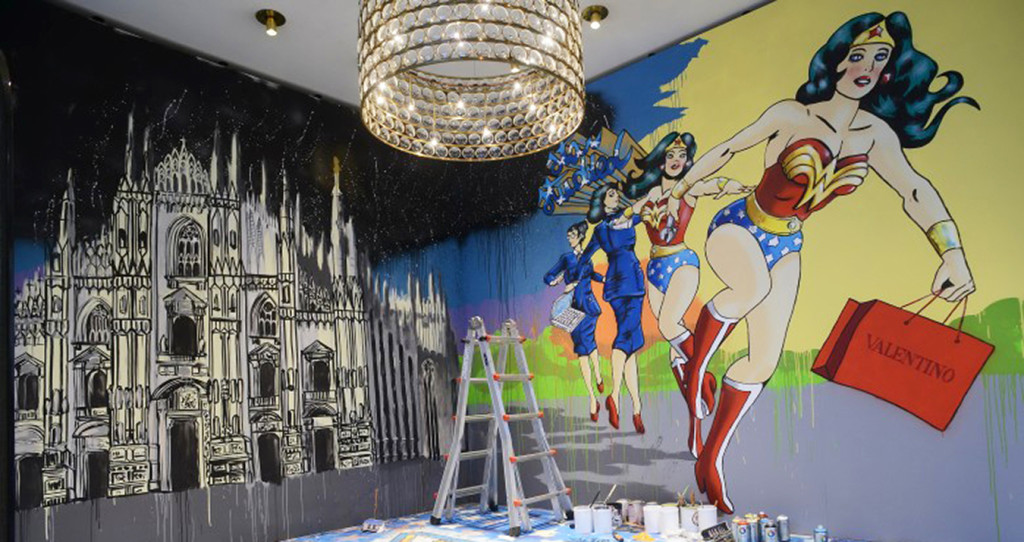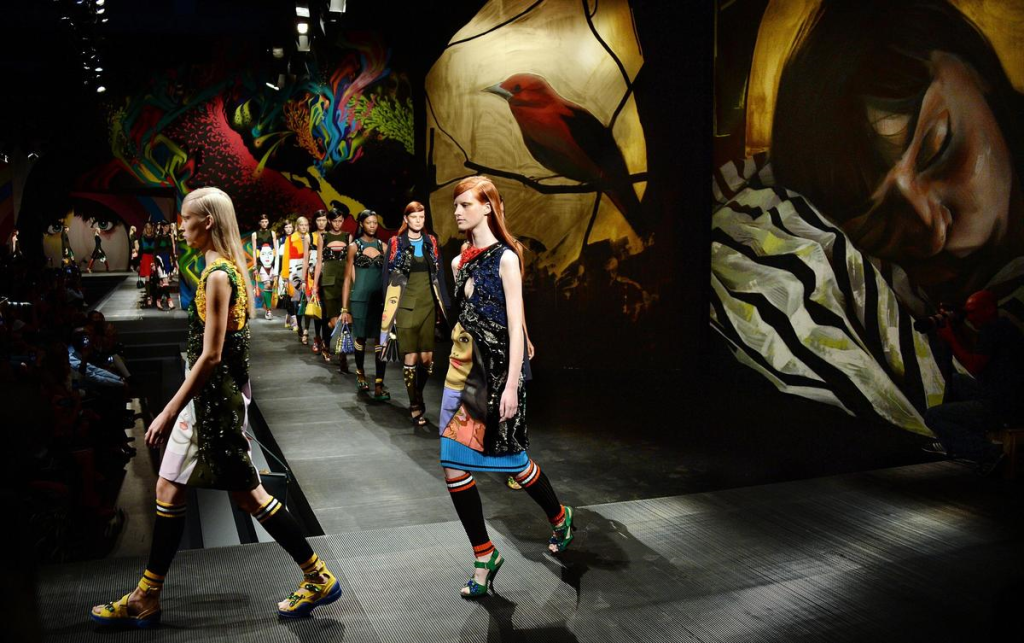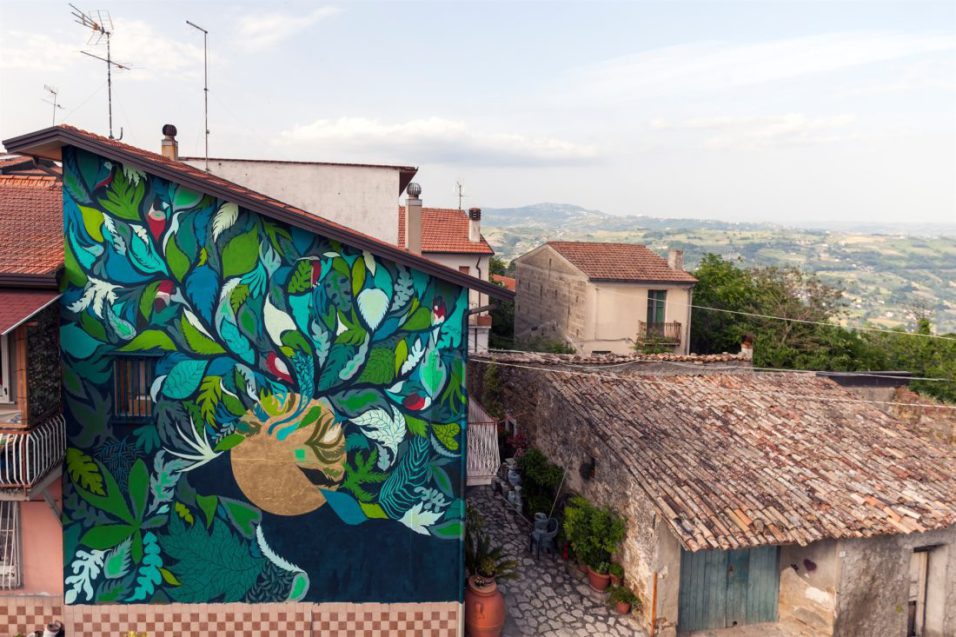Quelli dell’arte e della moda sono due pianeti facenti parte di un’unica galassia, vivono della stessa luce che emana il sole della creatività e le loro orbite dai percorsi magnificamente imprevedibili compiono a volte movimenti che li portano ad incontrarsi.
Se è vero che ormai la tendenza di molti stilisti a trarre ispirazione da opere d’arte per la realizzazione delle loro creazioni è cosa diffusa e storicizzata (basti pensare ad esempio all’iconico “Mondrian dress” di Yves Saint Laurent del 1965), più recente appare invece il connubio che si sta progressivamente instaurando tra fashion design ed arte urbana. In un’epoca dove la strada è divenuta una continua fonte di stimoli creativi, se lo street-style detta legge tanto quanto gli abiti che sfilano sulle passerelle, anche gli occhi dei più attenti cacciatori di trend hanno smesso di girovagare tra i quadri dei musei per rivolgersi alle grandi pareti dipinte della street art.
Sono diverse le maison di moda che hanno accolto tra i loro moodboards motivi tratti da questo immaginario, come ad esempio Louis Vuitton che nella collezione Primavera/Estate 2014 ha proposto abiti in tulle e chiffon vivacizzati dalla presenza di scritte in stile graffiti. Anche Chanel nella stessa annata ha realizzato una delle sue consuete sfilate evento, dove già solo l’allestimento delle scenografie costituirebbe di per sé uno spettacolo a cui molti vorrebbero assistere. In questo caso all’interno di un grande museo immaginato nel quale le modelle sfilavano tra quadri e sculture, sono comparsi piccoli accessori dal taglio urban: borse e zainetti dove lo storico logo con le due C campeggiava a mo’ di stencil tra schizzi di colore e ciondoli. Ed ovviamente un enfant terrible come Jeremy Scott, nelle sue costanti ed eccentriche rivisitazioni di modelli tratti dalla cultura di massa, non poteva lasciarsi scappare un’influenza del genere: numerosi vestiti presentati nella collezione Autunno/Inverno 2015 di Moschino si configuravano letteralmente come traduzioni su tessuto dei murales che colorano le grandi metropoli.
Perfino tanti street artists hanno avuto modo di poter mettere il loro ardore direttamente al servizio delle passerelle, segno di un connubio che non significa solo ispirazione ma anche diretta collaborazione. Sempre Louis Vuitton ha realizzato per alcuni anni consecutivi delle collezioni di sciarpe in edizione limitata assieme a grandi nomi come Lady Aiko, Os Gemeos ed Andrè Saraiva. Gucci Ghost, nome d’arte di Trouble Andrew, ha dato invece corpo ai suoi fantasmi lavorando nella collezione Autunno/Inverno di quest’anno assieme al marchio di cui anch’egli porta il nome, l’incontro tra la sua opera e l’estro del designer Alessandro di Michele ha partorito una collezione che vive di austerità e ribellione, dove l’ossimoro incarna il segreto di una contaminazione unica nel suo genere.
Come non pensare poi ad OBEY, che dopo aver raggiunto fama mondiale con i suoi mastodontici murals dai toni politici ed inquisitori, ha deciso di lanciarsi in un’attività imprenditoriale lanciando un suo brand che ha riscosso altrettanto successo.
Un caso particolare è invece rappresentato da due dei padri fondatori dell’arte urbana, Keith Haring e Jean-Michel Basquiat, che nonostante non abbiano mai collaborato direttamente con alcuna casa di moda, hanno lasciato al mondo un patrimonio iconografico talmente tanto vasto ed apprezzabile da non poter non essere reimpiegato dagli addetti ai lavori dell’industria del fashion. I celeberrimi “Radiant boys” di Haring sono stati declinati nei più diversi modi e tra i più diversi capi: t-shirts e giacche, come nelle collezioni di Zara e Vivienne Westwood, o calzature, come nelle sneakers dell’Adidas e di Tommy Hilfiger, finendo addirittura ad assumere le fattezze di veri e propri tacchi reggenti le geniali scarpe scultura di Nicholas Kirkwood. Stessa sorte è toccata appunto anche a Basquiat, che tra l’altro, piccola curiosità, sfilò come modello per Comme des Garçon nel lontano 1987. Le sue tormentate figure dal fascino primitivista hanno fatto la loro apparizione sulle passerelle di Gianni Versace, Valentino e Donna Karan anche dopo la sua prematura scomparsa.
Se è vero poi che ad essere importante non è solo il contenuto ma anche il contenente, meritano altrettanta attenzione le opere create come scenografie da accompagnamento e completamento per sfilate ed eventi di moda. Proprio quest’anno lo street artist Solo ha messo mano alla realizzazione di alcuni murals all’interno delle boutiques di Valentino nelle città di New York, Milano e Roma, in occasione dell’uscita della capsule collection “Wonder Woman Valentino”. Abiti ed opere hanno voluto rendere omaggio all’eroicità della donna moderna attraverso la figura idealizzante del noto personaggio dei fumetti. Nella lista non potrebbe poi mai mancare una maison come Prada, da sempre in prima linea in fatto di arte. Nel 2013 ha infatti presentato il progetto “In the Heart of the Multitude”, dove in occasione della sfilata donna Primavera/Estate 2014 ha invitato i muralisti El Mac, Mesa, Gabriel Specter, Stinkfish e gli illustratori Jeanne Detallante e Pierre Mornet a dipingere all’interno del suo spazio in Via Fogazzaro opere relative ai temi della femminilità, del potere e della molteplicità.
Ma la poliedricità della street art non si esaurisce in questi unici risvolti. Essa può ricoprire a volte anche un ruolo storico e dar voce alla nuda pietra delle pareti della città rivestendola con gli abiti appesi nell’armadio della memoria, attraverso la rievocazione di episodi e personaggi strettamente legati al luogo per il quale viene concepita. Dopo un vorticoso viaggio tra passerelle e showrooms è doveroso fermarsi un attimo e concludere menzionando un’iniziativa notevole e lodevole che quest’anno, in occasione di una mostra di calzature di Salvatore Ferragamo a Bonito, suo piccolo paesino di origine, ha visto l’arte stringersi non solo alla moda, ma anche alla storia ed al territorio. Cinque artisti infatti, Tellas, Gola Hundun, Milu Correch, Giulio Vesprini e Millo, hanno ideato altrettanti interventi pittorici volti a celebrare e ricordare in eterno la figura del “calzolaio dei sogni”, che ha contribuito a rendere leggenda la moda made in Italy.
[divider]ENGLISH VERSION[/divider]
The planets of fashion and art are both part of one galaxy. They live on the same light released by the sun of creativity and sometimes they bump into each other because of the movements their orbits make on their magnificently unpredictable paths.
It is true that now it is common and historicized that lots of stylists tend to get inspired by artworks for their creations (just think of the iconic example of Yves Saint Laurent’s “Mondrian dress” in 1965). Anyway, a combination of fashion design and urban art has lately showed up and it is gradually establishing itself. At a time when the street has become a continuous source of creative stimuli, if street-style lays down the law as much as the clothes walking the runway, even the most careful trend-hunters’ eyes stopped roaming the paintings in the museums to turn to the big painted walls of the street art.
Several fashion houses welcomed among their moodboards patterns from this context. For example, in his Spring/Summer 2014 collection Louis Vuitton presented tulle and chiffon clothes livened up by writings and graffiti. In the same year, also Chanel realized one of its usual fashion show events, where yet the scenery setting itself appears to be a show many people would like to see. Here, within a big imaginary museum where the models walked the runway among paintings and sculptures, small accessories with a urban cut came out. Among bags and backpacks, the historical logo with two C stood out like a stencil among color spurts and charms. And of course through his constant and eccentric reassessment of patterns from mass culture, an enfant terrible like Jeremy Scott, could not miss an influence like this. Lots of clothes showed in Moschino’s Fall/Winter 2015 collection literally displayed as fabric translations of the murals coloring big metropolises.
Even street artists managed to put their fervor at the disposal of runways, which is the sign of a combination meaning not only inspiration but also direct collaboration. Again Louis Vuitton had been making limited-edition scarf collections with big brands like Lady Aiko, Os Gemeos and Andrè Saraiva for several consecutive years. Gucci Ghost, Trouble Andrew’s stage name, has shaped his ghosts working on this year’s Fall/Winter collection with the brand he is named after as well. The encounter between his work and the designer Alessandro di Michele’s creative flair gave birth to a collection living on austerity and rebellion, where oxymoron embodies the secret of a unique contamination of its kind.
How not to think about OBEY? After reaching worldwide fame with its huge murals by political and inquiring tones, it decided to plunge into an entrepreneurial activity by launching a brand of its own which had just as much success.
A special case is that of the urban art founding fathers, Keith Haring and Jean-Michel Basquiat. Despite having never directly cooperated with any fashion house, they left the world with such a huge and appreciable iconographical patrimony that fashion industry’s operators could not help reusing it. Haring’s famous “Radiant boys” have been reused in the most different ways and clothes. We find them in t-shirts and jackets, as for Zara and Vivienne Westwood’s collections, or in footwear, as for Adidas or Tommy Hilfiger’s sneakers, which even ended up taking the appearance of real heels to bear Nicholas Kirkwood’s genial sculpture-shoes. The same fate affected Basquiat who, in addition and out of curiosity, walked the runway as a model for Comme des Garçon back in 1987. His tormented figures with a primitivist charm appeared on the runways of Gianni Versace, Valentino and Donna Karan, even after her premature death.
Moreover, if we take for true that the container is as important as the content, we need to pay as much attention to the artworks created as accompaniment and completion sceneries for fashion shows and events. Right this year, the street artist Solo has taken up the realization of several murals within Valentino’s boutiques in New York, Rome and Milan on the occasion of the “Wonder Woman Valentino” capsule collection release. Clothes and artworks wishing to be a tribute to modern women’s heroic virtues through the idealizing figure of this popular comic books character. In this list we can never miss a house like Prada, always on the frontline when dealing with art. In 2013, it has indeed presented the “In the Heart of the Multitude” project. Here, on the occasion of the Spring/Summer 2014 women runway, it invited muralists El Mac, Mesa, Gabriel Specter, Stinkfish and the illustrators Jeanne Detallante and Pierre Mornet to paint artworks related to the themes of femininity, power and multiplicity within its space in Via Fogazzaro.
Anyway, street art versatility is not restricted to these implications. Sometimes it can cover an even historical role and give voice to the naked stone of the walls around the city by covering it up with clothes hung in the wardrobe of memory, through the recalling of episodes and characters strictly bonded to the place it is conceived for. After a twisting travel among runways and showrooms, we need to stop for a second and mention a remarkable and praiseworthy initiative that this year has seen fashion clasping not only art, but also history and territory, on the occasion of Salvatore Ferragamo’s footwear exhibition in Bonito, his small native town. In fact, five artists Tellas, Gola Hundun, Milu Correch, Giulio Vesprini and Millo invented aso many painting interventions to celebrate and remember the “dreams shoemaker” for eternity, who has contributed to make Made in Italy fashion legendary.
Traduzione a cura di Fabiola Lupo

